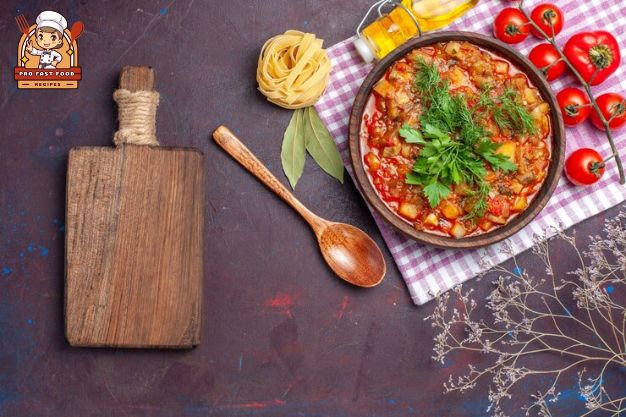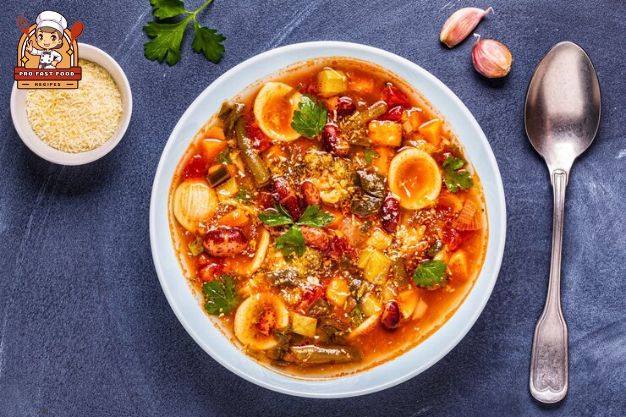If you’re craving a dish that embodies the heart of Tuscan cuisine, look no further than Ribollita Recipe. This hearty Tuscan soup combines simple ingredients with rich flavors, delivering a comforting and nutritious meal that has stood the test of time. Made with stale bread, cannellini beans, and a variety of vegetables, Ribollita is a perfect example of how Italian cooking turns humble ingredients into culinary masterpieces.
In this comprehensive guide, we’ll walk you through the best Ribollita recipe, highlighting its authentic roots, the step-by-step preparation, and tips for making this dish your own. Whether you’re a seasoned cook or trying Italian recipes for the first time, this simple Ribollita recipe will become a staple in your kitchen.
What is Ribollita?
Ribollita is a classic Tuscan soup that comes from the Italian countryside. The word “Ribollita” means “reboiled” since the meal was traditionally prepared by reheating leftovers from the day before. Farmers would use day-old bread, black cabbage (cavolo nero), cannellini beans, and other seasonal vegetables to create a rich and satisfying meal. The flavors intensify when reheated, making it even better on the second or third day.
A Brief History of Ribollita
The origins of ribollita date back to medieval Tuscany, where peasants repurposed leftovers from noble households. These leftovers often included stale bread and vegetable scraps, which were combined with beans and olive oil to create a nourishing soup. This tradition has evolved into the beloved dish we know today, cherished for its hearty flavors and representation of Tuscan culture.
Ingredients for Authentic Ribollita
To prepare an authentic ribollita recipe, you’ll need the following ingredients:
Essential Ingredients:
- Stale bread (preferably Tuscan bread, day-old)
- Cannellini beans (400g, cooked or canned)
- Cavolo nero (black cabbage) or savoy cabbage
- Swiss chard or kale
- Carrots (2 medium, diced)
- Celery stalks (2, diced)
- Onion (1 large, finely chopped)
- Garlic cloves (2, minced)
- Tomato sauce (400g)
- Vegetable broth (1.5 liters)
- Olive oil (extra virgin, 4 tbsp)
- Parmesan rind (optional, for added flavor)
- Salt and black pepper (to taste)
Optional Add-Ins:
- Crispy pancetta (for a smoky flavor)
- Zucchini or leeks (for extra vegetables)
- A little bit of truffle oil (for an opulent finish)
Step-by-Step Ribollita Recipe
1. Prepare the Cannellini Beans
If using dried beans, soak them overnight and cook them until tender, reserving the cooking water. Rinse and drain the canned beans thoroughly.
2. Make the Soffritto
Heat the extra virgin olive oil in a big saucepan over medium heat. After adding the celery, carrot, and onion, stir them occasionally for around five minutes, or until they are tender and fragrant. This soffritto forms the base of your Italian ribollita soup recipe.
3. Add the Garlic and Tomato Sauce
Cook for one minute after adding the minced garlic. Then, add the tomato sauce and cook for another 5 minutes, allowing the flavors to meld.
4. Add the Vegetables and Broth
Cut the cavolo nero, Swiss chard, and savoy cabbage into thin slices. Pour the veggie broth into the saucepan and add these leafy leaves. After bringing the soup to a boil, lower the heat and simmer it for 20 minutes.
5. Incorporate the Beans and Bread
Add the cooked cannellini beans (and their reserved cooking water, if applicable) to the soup. the stale bread into bits and add it to the pot. The bread will absorb the broth, creating a thick, stew-like consistency.
6. Simmer and Season
Simmer the soup for a further fifteen minutes, stirring now and again. Add the parmesan rind, if using, and season with salt and black pepper to taste.
7. Reheat and Serve
For the most authentic experience, let the soup cool and refrigerate it overnight. Reheat the ribollita the next day for a deeper, more robust flavor. Serve in large dishes and top with grated Parmesan cheese and a liberal amount of extra virgin olive oil.
Why Ribollita is Better the Next Day
The true magic of ribollita lies in its ability to develop richer flavors over time. The bread and vegetables continue to soak up the broth, resulting in a thicker, more flavorful soup. This makes ribollita the perfect make-ahead meal for busy weeks.
Tips for the Best Ribollita Recipe
- Use high-quality olive oil: A good extra virgin olive oil enhances the flavors of this dish.
- Opt for day-old bread: Fresh bread won’t achieve the same texture as stale bread in this soup.
- Don’t skip the cavolo nero: This black kale is a key ingredient in authentic Tuscan ribollita.
- Reheat slowly: Warm the soup gently over low heat to preserve its rich flavors.
Serving Suggestions for Ribollita
Serve ribollita with a side of crusty Tuscan bread or a fresh green salad. For a more indulgent meal, pair it with a glass of Chianti wine, which complements the earthy flavors of the soup.
Pro Fast Food Recipes: Elevate Your Ribollita Game
Looking for more authentic Italian recipes like this? Explore Pro Fast Food Recipes for a curated selection of dishes that bring the taste of Italy to your table. From hearty soups to indulgent pastas, we’ve got you covered with easy-to-follow recipes and expert tips.

FAQs About Ribollita Recipe
What is the main difference between ribollita and minestrone?
While both are Italian vegetable soups, ribollita is thickened with stale bread and focuses on Tuscan ingredients like cannellini beans and black kale. Minestrone, on the other hand, often includes pasta and has a thinner broth.
Can I make ribollita vegan?
Yes, simply omit the parmesan rind and use vegan-friendly bread. Ribollita is naturally packed with plant-based ingredients.
How long does ribollita last in the fridge?
Stored in an airtight container, ribollita can last up to 4 days. Reheating it the next day enhances its flavor even furthe
Can I freeze ribollita?
Absolutely! Ribollita can last up to three months in the freezer. Reheat on the stovetop after thawing overnight in the refrigerator.
What can I substitute for cavolo nero?
If you can’t find black kale, use Swiss chard or savoy cabbage for a similar flavor and texture.



